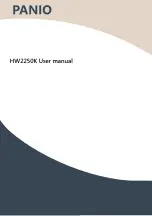
The modem pooling application within the integrated services digital network (ISDN) environment provides the ability
for ISDN customers to make data calls to an analog customer who has a modem. Analog customers can also
originate a call to an ISDN customer who has subscribed to the modem pooling feature. These data calls make use
of modems in a common pool instead of requiring individual analog lines and modems for each ISDN customer. A
modem pool member consists of two basic sides, the digital side and the analog side. The ISDN modem pooling
application from the digital side, used the BRI ``D'' channel provisioned for X.25 packet switching and is physically
wired from a ``T'' or ``U'' integrated services line unit (ISLU) line card to the Lucent Technologies 7500 modular data
module (MDM). The MDM performs X.25 to asynchronous protocol conversion. The analog side of the modem pool
terminates to an analog line unit or ISLU ``Z'' analog line card and is wired to the analog modem. The digital and
analog equipment is connected electrically by using an RS232C cable. The modem pool group should be built with a
minimum of three modem pool members. Each modem pool member consists of a dedicated BRI, MDM, modem,
and analog line.
Refer to Figure 3-1 for a basic layout of the modem pool.
There are two basic types of modem pools that can be assigned. They are as follows:
Private Modem Pools
are restricted to users that are members of a closed user group (CUG). The CUGs allow
a predetermined set of users access to a modem pool. They are assigned during the line assignment process
to the modem pool multiline hunt group and also to the ISDN customers who have subscribed to the modem
pool feature. Once this is done, only ISDN customers with the same CUG number as the modem pool will have
access to it. This would normally be the case when the hardware (modems and terminal adapters) is to be
located at the end customer's premises.
Public Modem Pools
can be assigned in two different ways. One way is to build a modem pool using a new
CUG number. Any ISDN customer that subscribes to the modem pooling feature would be assigned the same
CUG as the public modem pool. Public modem pools could be located in the central office.
Another way to build a public modem pool is to override the permissions on the CUG to make the pool accessible by
anyone knowing the phone number. A CUG must always be established for any modem pool.
The following recent change views are used to build the modem pool translations:
Recent Change View 4.1 (Line Class Code)
Recent Change View 8.5 (Timing Miscellaneous)
Recent Change View 12.18 (Multiline Hunt Feature Definition)
Recent Change View 3.5 (Multiline Hunt Group Line Assignment)
Recent Change View 23.2 (ISDN Individual DSL
PKT HML)
Recent Change View 23.12 (ISDN Modem TN to DSL Assignment)
Recent Change View 23.10 (CUG DSL Assignment).
For more details on the previously referenced recent change views, refer to the following:
235-118-249:
Recent Change Procedures
Software Release 5E10
235-118-250:
Recent Change Reference
Software Release 5E10
235-118-251:
Recent Change Procedures
Software Release 5E11
235-105-210
October 1999
Copyright © 1999
Page 36
Summary of Contents for 5ESS-2000
Page 96: ...235 105 210 October 1999 Copyright 1999 Page 2 ...
Page 184: ...235 105 210 October 1999 Copyright 1999 Page 3 ...
Page 300: ...13 STOP YOU HAVE COMPLETED THIS PROCEDURE 235 105 210 October 1999 Copyright 1999 Page 55 ...
Page 339: ...7 STOP YOU HAVE COMPLETED THIS PROCEDURE 235 105 210 October 1999 Copyright 1999 Page 13 ...
Page 342: ...235 105 210 October 1999 Copyright 1999 Page 2 ...
Page 359: ...235 105 210 October 1999 Copyright 1999 Page 5 ...
Page 609: ...2 STOP YOU HAVE COMPLETED THIS PROCEDURE 235 105 210 October 1999 Copyright 1999 Page 12 ...
Page 676: ...235 105 210 October 1999 Copyright 1999 Page 9 ...
Page 792: ...3 STOP YOU HAVE COMPLETED THIS PROCEDURE 235 105 210 October 1999 Copyright 1999 Page 9 ...
Page 799: ...Figure 11 36 3 1 Cleaning Points 235 105 210 October 1999 Copyright 1999 Page 7 ...
Page 801: ...235 105 210 October 1999 Copyright 1999 Page 9 ...
Page 839: ...2 STOP YOU HAVE COMPLETED THIS PROCEDURE 235 105 210 October 1999 Copyright 1999 Page 16 ...
Page 999: ...2 STOP YOU HAVE COMPLETED THIS PROCEDURE 235 105 210 October 1999 Copyright 1999 Page 13 ...
Page 1008: ...Figure 11 55 1 CTSNS DIP Switch Settings 235 105 210 October 1999 Copyright 1999 Page 2 ...
Page 1011: ...235 105 210 October 1999 Copyright 1999 Page 5 ...
Page 1053: ...235 105 210 October 1999 Copyright 1999 Page 15 ...
Page 1289: ...Figure 15 17 2 AMATPS Data Link 235 105 210 October 1999 Copyright 1999 Page 2 ...
Page 1292: ...235 105 210 October 1999 Copyright 1999 Page 5 ...
Page 1303: ...9 STOP YOU HAVE COMPLETED THIS PROCEDURE 235 105 210 October 1999 Copyright 1999 Page 2 ...
Page 1360: ...Figure 15 47 2 Typical SCANS III Link Diagram 235 105 210 October 1999 Copyright 1999 Page 2 ...
Page 1372: ...235 105 210 October 1999 Copyright 1999 Page 2 ...
Page 1374: ...235 105 210 October 1999 Copyright 1999 Page 4 ...
Page 1421: ...Table 1 1 O M Checklist 235 105 210 October 1999 Copyright 1999 Page 3 ...
















































